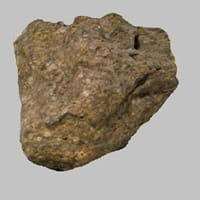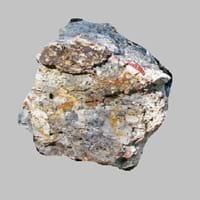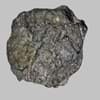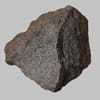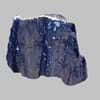Definition
Tuff is a type of rock made of volcanic ash ejected from a vent during a volcanic eruption
Novaculite is a dense, hard, fine-grained, siliceous metamorpic rock which is a type of chert that breaks with conchoidal fracture
Discoverer
Unknown
Unknown
Etymology
From a Latin word tophous then in Italian tufo and finally tuff
From Latin word novacula, for razor stone
Class
Igneous Rocks
Sedimentary Rocks
Sub-Class
Durable Rock, Medium Hardness Rock
Durable Rock, Hard Rock
Group
Volcanic
Not Applicable
Other Categories
Fine Grained Rock, Opaque Rock
Fine Grained Rock, Opaque Rock
Texture
Clastic, Pyroclastic
Banded, Glassy, Rough, Vitreous
Color
Brown, Grey, Yellow
Black, Brown, Green, Grey, Red, White
Durability
Durable
Durable
Scratch Resistant
Yes
Yes
Appearance
Dull, Vesicular and Foilated
Glassy or Pearly
Interior Uses
Decorative Aggregates, Entryways, Flooring, Homes, Interior Decoration
Countertops, Decorative Aggregates, Flooring, Interior Decoration
Exterior Uses
As Building Stone, As Facing Stone, Garden Decoration, Office Buildings, Paving Stone
As Building Stone, Garden Decoration
Other Architectural Uses
Curbing
Curbing
Construction Industry
Building houses or walls, Construction Aggregate
Arrowheads, Building houses or walls, Cement Manufacture, Construction Aggregate, Cutting Tool, for Road Aggregate, Knives, Landscaping, Making natural cement, Production of Glass and Ceramics, Rail Track Ballast, Roadstone, Spear Points, Used to sharpen metal tools and weapons
Medical Industry
Not Yet Used
Not Yet Used
Antiquity Uses
Artifacts, Monuments, Sculpture, Small Figurines
Artifacts, Monuments
Commercial Uses
Creating Artwork
Cemetery Markers, Gemstone, In aquifers, In fire-starting tools, Jewelry, Manufacture of tools, Pebbles are used in ball mills to grind in ceramics industry, To determine the gold content of jewelry
Types
Welded tuff, Rhyolitic tuff, Basaltic tuff, Trachyte tuff, Andesitic tuff and Ignimbrite.
Not Available
Features
Always found as volcanic pipes over deep continental crust
Clasts are smooth to touch, Easily splits into thin plates, Has High structural resistance against erosion and climate
Archaeological Significance
Famous Monuments
Easter Island in the Polynesian Triangle, Pacific Ocean
Data Not Available
Sculpture
Used
Not Yet Used
Famous Sculptures
Data Not Available
Not Applicable
Pictographs
Used
Not Used
Petroglyphs
Used
Not Used
Figurines
Used
Not Yet Used
Formation
Tuff is formed when large masses of ash and sand which are mixed with hot gases are ejected by a volcano and avalanche rapidly down its slopes.
Novaculite forms when microcrystals of silicon dioxide grow within soft sediments that become limestone or chalk. The formation of Novaculite can be either of chemical or biological origin.
Mineral Content
Calcite, Chlorite
Quartz, Silicon
Compound Content
Hydrogen Sulfide, Sulfur Dioxide
Ca, Silicon Dioxide
Types of Metamorphism
Burial Metamorphism, Cataclastic Metamorphism, Contact Metamorphism, Hydrothermal Metamorphism, Impact Metamorphism, Regional Metamorphism
Not Applicable
Types of Weathering
Biological Weathering, Chemical Weathering, Mechanical Weathering
Not Applicable
Types of Erosion
Chemical Erosion, Coastal Erosion, Glacier Erosion, Sea Erosion, Water Erosion, Wind Erosion
Chemical Erosion, Coastal Erosion, Glacier Erosion
Grain Size
Fine Grained
Fine Grained
Fracture
Uneven
Conchoidal
Porosity
Highly Porous
Less Porous
Luster
Vitreous to Dull
Waxy and Dull
Cleavage
Not Available
Non-Existent
Toughness
Not Available
1.5
Specific Gravity
2.73
2.5-2.7
Transparency
Opaque
Translucent to Opaque
Density
1-1.8 g/cm3
2.7 g/cm3
Resistance
Heat Resistant, Impact Resistant, Pressure Resistant, Wear Resistant
Heat Resistant, Impact Resistant, Pressure Resistant, Wear Resistant
Deposits in Eastern Continents
Asia
Afghanistan, Armenia, Azerbaijan, Burma, Cambodia, China, India, Indonesia, Iran, Japan, Malaysia, Mongolia, Nepal, North Korea, Pakistan, Saudi Arabia, Syria, Taiwan, Thailand, Turkey, Vietnam, Yemen
China, India, Iran, Japan, Oman, Russia, Saudi Arabia, Taiwan, Thailand, Vietnam
Africa
Cameroon, Cape Verde, Eritrea, Ethiopia, Kenya, Libya, Madagascar, Nigeria, Rwanda, South Africa, Sudan, Uganda
Kenya, Morocco, South Africa, Tanzania
Europe
France, Georgia, Germany, Greece, Iceland, Italy, Netherlands, Poland, Portugal, Spain, United Kingdom
Austria, France, Greece, Italy, Malta, Poland, Portugal, Serbia, Spain, Sweden, United Kingdom
Others
Antarctica, Hawaii Islands
Greenland, Mid-Atlantic Ridge
Deposits in Western Continents
North America
Canada, Costa Rica, Panama, USA
Canada, Mexico, USA
South America
Argentina, Bolivia, Brazil, Chile, Ecuador, Paraguay
Bolivia, Brazil
Deposits in Oceania Continent
Australia
Central Australia, Western Australia
New South Wales, Queensland, South Australia, Western Australia
Tuff vs Novaculite Characteristics
Though some rocks look identical, they have certain characteristics which distinguish them from others. Characteristics of rocks include texture, appearance, color, fracture, streak, hardness etc. Tuff vs Novaculite characteristics assist us to distinguish and recognize rocks. Also you can check about Properties of Tuff and Properties of Novaculite. Learn more about Tuff vs Novaculite in the next section. The interior uses of Tuff include Decorative aggregates, Entryways, Flooring, Homes and Interior decoration whereas the interior uses of Novaculite include Countertops, Decorative aggregates, Flooring and Interior decoration. Due to some exceptional properties of Tuff and Novaculite, they have various applications in construction industry. The uses of Tuff in construction industry include Building houses or walls, Construction aggregate and that of Novaculite include Arrowheads, Building houses or walls, Cement manufacture, Construction aggregate, Cutting tool, For road aggregate, Knives, Landscaping, Making natural cement, Production of glass and ceramics, Rail track ballast, Roadstone, Spear points, Used to sharpen metal tools and weapons.
More about Tuff and Novaculite
Here you can know more about Tuff and Novaculite. The life cycle of a rock consists of formation of rock, composition of rock and transformation of rock. The composition of Tuff and Novaculite consists of mineral content and compound content. The mineral content of Tuff includes Calcite, Chlorite and mineral content of Novaculite includes Quartz, Silicon. You can also check out the list of all Igneous Rocks. When we have to compare Tuff vs Novaculite, the texture, color and appearance plays an important role in determining the type of rock. Tuff is available in brown, grey, yellow colors whereas, Novaculite is available in black, brown, green, grey, red, white colors. Appearance of Tuff is Dull, Vesicular and Foilated and that of Novaculite is Glassy or Pearly. Properties of rock is another aspect for Tuff vs Novaculite. The hardness of Tuff is 4-6 and that of Novaculite is 7. The types of Tuff are Welded tuff, Rhyolitic tuff, Basaltic tuff, Trachyte tuff, Andesitic tuff and Ignimbrite. whereas types of Novaculite are Not Available. Streak of rock is the color of powder produced when it is dragged across an unweathered surface. The streak of Tuff is white while that of Novaculite is colorless. The specific heat capacity of Tuff is 0.20 kJ/Kg K and that of Novaculite is 0.74 kJ/Kg K. Depending on the properties like hardness, toughness, specific heat capacity, porosity etc., rocks are resistant to heat, wear, impact, etc.Tuff is heat resistant, impact resistant, pressure resistant, wear resistant whereas Novaculite is heat resistant, impact resistant, pressure resistant, wear resistant.
